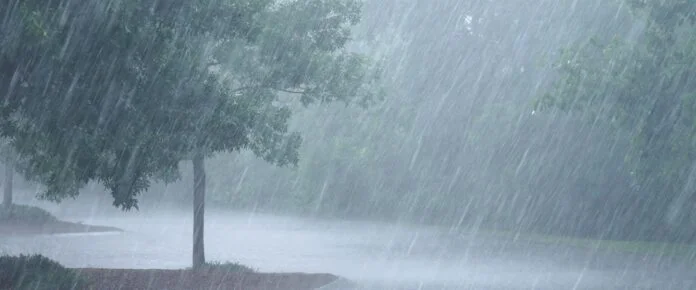The Pakistan Meteorological Department (PMD) has issued a fresh Pakistan weather update, warning of another spell of rain, wind, and thunderstorms set to hit the northern and central parts of the country between August 29 and September 2. According to the advisory, some areas may witness intense rainfall, heightening the threat of flash floods and landslides.
This year’s monsoon season has already proven destructive in Pakistan, with more than 800 lives lost since June due to floods and landslides caused by relentless downpours. The latest Pakistan weather forecast indicates that monsoon currents from the Arabian Sea and Bay of Bengal will enter the northern belt from August 29, while a westerly wave will join by August 30, triggering widespread showers across multiple provinces.
Areas Expected to be Affected
- Kashmir: Neelum Valley, Muzaffarabad, Rawalakot, Poonch, Bagh, Haveli, Kotli, Bhimber, and Mirpur are expected to experience heavy to very heavy rains from August 29 to September 2.
- Gilgit-Baltistan: Diamir, Astore, Ghizer, Skardu, Hunza, Gilgit, Ghanche, and Shigar may face rainfall with isolated heavy spells between August 30 and September 1.
- Khyber Pakhtunkhwa: Showers and thunderstorms are forecast in Dir, Chitral, Swat, Kohistan, Mansehra, Abbottabad, Malakand, Bajaur, Peshawar, Nowshera, Mardan, and adjoining districts.
- Punjab & Islamabad: Heavy rain is likely in Islamabad, Rawalpindi, Murree, Galliyat, Attock, Chakwal, Jhelum, Gujranwala, Sialkot, Lahore, and Faisalabad. South Punjab cities including Multan, DG Khan, Bahawalpur, and Layyah may also face isolated heavy downpours.
- Sindh & Balochistan: Rain with thunder is forecast for Tharparkar, Umerkot, Dadu, Jacobabad, Sukkur, and Larkana on August 30-31. Barkhan, Zhob, Khuzdar, and Loralai in Balochistan may also receive heavy rainfall from August 30 to September 1.
Risks and Warnings
The PMD has cautioned about possible flash floods in local streams of Kashmir, Murree, Galliyat, Rawalpindi-Islamabad, and parts of Khyber Pakhtunkhwa and Punjab. Urban flooding is feared in low-lying zones of Lahore, Gujranwala, Faisalabad, Peshawar, and Mardan. Landslides and mudslides may disrupt travel in hilly regions of KP, GB, Murree, and Kashmir.
Read More: Pakistan’s Historic Headworks Under Threat from Record Floods
Strong winds and lightning could damage fragile infrastructure such as mud houses, billboards, electricity poles, and solar panels. Local administrations and emergency teams have been placed on high alert, while citizens—especially tourists—are urged to avoid unnecessary travel and stay updated on the Pakistan weather update.









